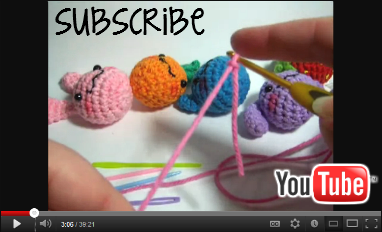My First Dyed Yarn – Taste the Rainbow!
I read up and found that protein fibers (animal hair like wool, alpaca, mohair etc) can be dyed effectively with food safe colouring using Koolaid powder, food colouring or icing colouring, if there is an acid present to bond the dye to the fiber. That option was way more attractive than chemical dyes because I have a tiny kitchen and wouldn’t be able to store a dye pot and utensils, nor would I want to have to buy a dye pot and separate yarn dyeing gear. Armed with the gobs of information found here I set out to dye two balls of Stitch Nation Full O’ Sheep yarn I got on clearance with a mixture of KoolAid and regular liquid food colouring with lemon juice to bind the dye. I used the hand painted method outlined here for the colour changes and heat set the dye by putting the yarn in a steam basket over a pot of simmering water for 30 minutes instead of using the microwave since my microwave is tiny. Once it was steamed, I rinsed it but the water ran completely clear, which meant all the colour was absorbed into the yarn. I hung the hank outside in the sun to dry for a few hours and then it was pretty much good to go. Clean up was a breeze and I didn’t stain or destroy anything, which means this is pretty klutz proof.
I’m really happy with how it turned out, bright and fluffy and not felted at all. I will definitely be messing around with other colours as soon as my order of Wilton’s Icing Colours and Little lamb yarn gets here. It really worked out to be a good deal even though I used KoolAid which is pricier than food colouring. The yellow was food colouring and the other colours were KoolAid and as you can see, straight food colouring did as good of a job so I’ll be sticking to that in the future. Price breakdown:
Yarn: $8 (2 balls of 155 yards each)
KoolAid: $5
Food Colouring: $2
$15 for 310 yards of rainbow yarn I had fun making is an awesome deal compared to $9.99 for 95 yards of Crystal Palace Mochi Plus yarn (what I was thinking of buying even though the colourway wasn’t really exactly what I wanted) which would have added up to $30 for the same amount of yarn. Plus it makes the thing I make with this yarn, a little more mine, which I love.


















I’m going to give the Kool-Aid dye a try… thanks for the yarn advice! Happy Holidays from (the other side of) Canada 🙂
Kool aid is much cheaper if you buy the packets. you also have the added benefit of not worrying about rinsing out all the sugar. Store brands will usually run you .25- .50 cents each. Of course the benefit of using food color is that you can design your own colors. (:
This is great idea,I am always in search for variegated color yarn.I just find your site when googling about ami patterns and I must say that I love yours,especially that basics where just changing the ears different animal is born =o).Thanks for making them free.May I ask what eyes do you use?Keep up the good work.Greetings from Serbia.
Hi! I just wanted to say to you that I really admire you. This DIY-rainbowy thing is just amazing and I got very excited about the coming-back of the web (I didn’t know it came back until today!)
So the thing is that I just wanted you to know that I follow you even if I never comment here or something. I really think this is the best web about amigurumis I’ve ever found.
Keep making it great.
Lots of love from Spain! ;DDD
I LOVE LOVE LOVE this idea and can’t wait to try it myself 🙂 Well done!
Absolutely lovely?
It looks so happy! It is gorgeous!
Another acid you can use ( and is used in dyeing eggs) is vinegar… on that note, there are many things that can be used to dye yarn ( or eggs) , such as onion skins, walnut peels ( not shells, be careful of these cause you hands will turn a blackish purple for it lol) , blackberries, and good old grass ( any other plant material such as flower blooms and such will dye green no matter if the flower is colored or not) . I am a country girl and love dyeing things naturally lol these are just some ideas and I love these colors you have achieved in your yarns ^^